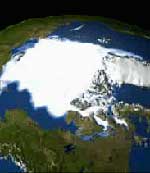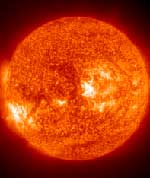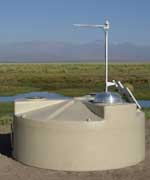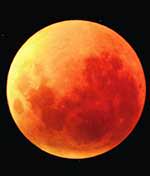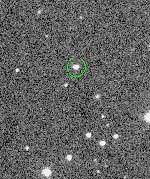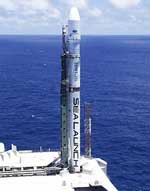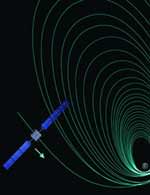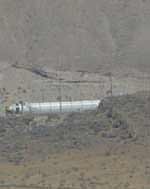
Image credit: Blake Goddard
Alliant Techsystems performed the first static test of a new five-segment solid rocket booster for the space shuttle. This new booster gives approximately 10% more thrust than the four-segment boosters that the shuttle currently flies with. If these new boosters are installed on the shuttle it would have a few benefits: the shuttle would have enough thrust to still reach orbit if its main engine fails, it won’t have to make an emergency landing; or it could be used to let the shuttle carry an additional 10,500 kg of cargo.
ATK (Alliant Techsystems, NYSE: ATK) yesterday successfully conducted the first static test firing of a five-segment Space Shuttle reusable solid rocket motor (RSRM).
The test conducted by ATK Thiokol Propulsion, Promontory, Utah, was part of an ongoing safety program to verify materials and manufacturing processes, by ground testing motors with specific test objectives. This five-segment motor, also considered a margin test motor, pushed various features of the motor to its limits so engineers could validate the safety margins of the four-segment motor currently used to launch Space Shuttles. The static firing was also a test designed to demonstrate the ability of the five-segment motor to perform at thrust levels in excess of 3.6 million pounds, approximately 10 percent greater than the four-segment motor.
?This test demonstrated ATK?s unique ability and expertise in the design and production of the RSRM,? said Jeff Foote, group vice president, Aerospace. ?It is yet another visible commitment by NASA and ATK to ensure the highest quality safety standards and mission success for future Space Shuttle flights.?
Foote said that in addition to validating safety margins by over-testing many RSRM attributes, the static firing also demonstrated the capability of the five-segment motor to increase Space Shuttle payload capacity by 23,000 pounds, or enable a safe abort to orbit in the event of loss of thrust from the main engines.
The five-segment motor generated an average thrust of 3.1 million pounds and burned for approximately 128 seconds. The current four-segment configuration generates an average 2.6 million pounds of thrust and burns for approximately 123 seconds. The new motor measures 12 feet in diameter and is 153.5 feet long ? 27.5 feet longer than the four-segment motor.
The static test allowed ATK to verify and validate numerous performance characteristics, processes, materials, components, and design changes that were incorporated into the five-segment RSRM. The test had 67 objectives and employed 633 instrumentation channels to collect data for evaluation. Preliminary results indicate that the motor met or exceeded all objectives.
The Space Shuttle RSRM is the largest solid rocket motor ever flown and the first designed for reuse. The reusability of the RSRM case and nozzle hardware is an important cost-saving factor for the nation’s space program. Each Space Shuttle launch currently requires the boost of two RSRMs. By the time the twin RSRMs have completed their task, the Space Shuttle orbiter has reached an altitude of 24 nautical miles and is traveling at a speed in excess of 3,000 miles per hour.
ATK Thiokol Propulsion is the world?s leading supplier of solid-propellant rocket motors. Products manufactured by the company include propulsion systems for the Delta, Pegasus?, Taurus?, Athena, Atlas, H-IIA, and Titan IV B expendable space launch vehicles, NASA?s Space Shuttle, the Trident II Fleet Ballistic Missile and the Minuteman III Intercontinental Ballistic Missile, and ground-based missile defense interceptors.
ATK is a $2.2 billion aerospace and defense company with strong positions in propulsion, composite structures, munitions, precision capabilities, and civil and sporting ammunition. The company, which is headquartered in Edina, Minn., employs approximately 12,200 people and has three business groups: Precision Systems, Aerospace, and Ammunition and Related Products. ATK news and information can be found on the Internet at www.atk.com.
Original Source: Alliant News Release

